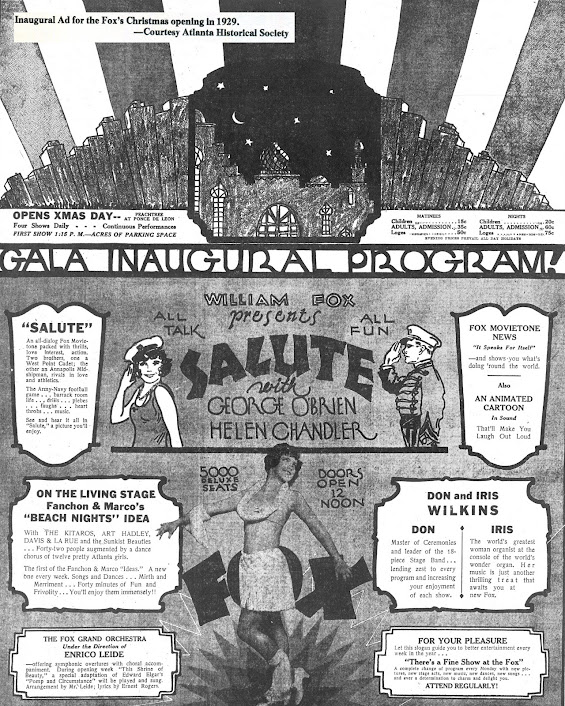FOX FACT
Companion site to BACKSTAGE AT THE FOX 1929, by Bob Foreman. Entire contents copyrighted 2013-2025.
LETTER FROM BEN HALL
HOW THE MOVIETONE ELEVATOR HELPED TO SAVE THE FOX THEATRE
For the requisite three-track stereo, the Movietone horns were retired and was replaced by three giant Altec Voice of the Theatre A-1 cabinets, which sat on the deck behind the picture sheet. The center horn, shown here, also sat partially astride the Movietone lift.
It was the custom each night, after the last film showing, for the two-man IA house crew, Sam and Rags, to press the button which closed the motorized traveler curtain; raise the houselights on the slow motion wheel of the Hub switchboard; and after five minutes or so, they would hit the push button at the stage manager desk to bring the orchestra pit lift up from the basement to stage level and juice the ghost lamp which lived upon it. Because the picture sheet frame and the three horns were shrouded by impenetrable full-height black velours, the stagehands worked blind. The black masking can be seen to the left of the Hub switchboard.
After informing management of the sad state of affairs, Sam and Rags phoned and woke up the IA business agent, who at midnight summoned a sleepy work crew down to the Fox. Gingerly, they lowered Movietone and the wrecked frame but found that by some miracle, the picture sheet itself was unharmed. Working through the night, they cut the frame up into scrapyard-size pieces, hung the picture sheet on a system pipe, and set the undamaged horn back on its feet. By the time of the noon matinee, the place was back in shape, and no one out front was wise to the near-disaster.
The best news was that the stage was finally clear for live performance, and on December 14, 1972, Humble Pie and the J. Geils Band played the first onstage rock show at the Fox, introducing the Moorish atmospheric movie palace to an entirely new audience.
"ATLANTA FOX ALBUM" (1975) by John McCall
John McCall's "Atlanta Fox Album" was the first printed history of the Atlanta Fox Theatre as well as the first collection of photos, containing dozens of original architectural studies that few had ever seen. When the Album first appeared in the newsletter of the American Theatre Organ Society in March, 1975, the future of the Fox was bleak indeed. The eventual success of the Save the Fox movement is due in no small part to the Album, which netted $70,000 toward saving the Fox, and neither author McCall nor printer James Jobson, a fellow organ enthusiast, received any compensation whatsoever. Grateful acknowledgement is made to Mr. McCall for permission to reproduce the Album, which can be downloaded in HD by clicking here.
Time-Life photographer Henry Groskinsky contributed the photo for the cover of the 1976 updated edition.




%20combo.jpg)
.jpg)
.jpg)



.jpg)
.jpg)







.jpg)



.jpg)
.jpg)































